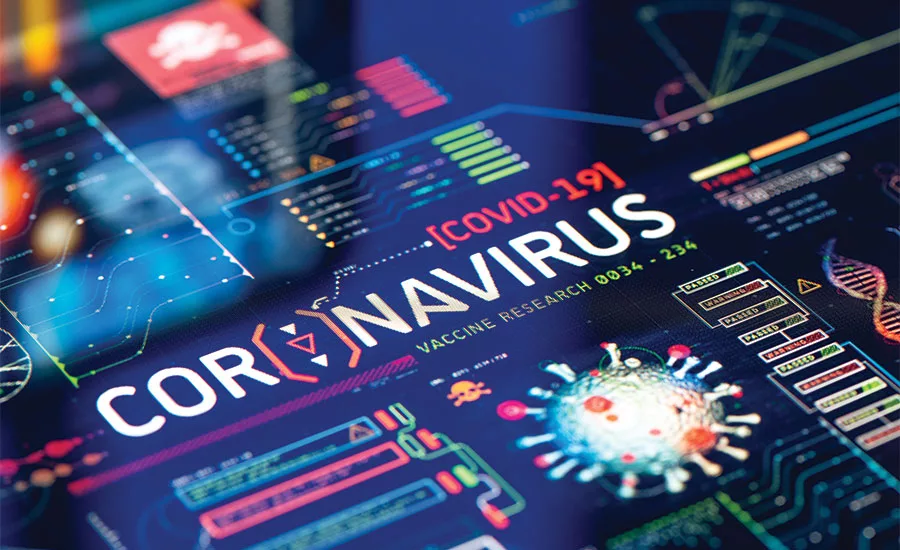Steps for businesses to respond to COVID-19 now and prepare for what comes next

The effects of the COVID-19 pandemic on businesses, not to mention our individual lives, will be felt for many months and possibly years to come. Supply chains have weakened links. Business and leisure travel have all but ceased. Offices are closed and more employees than ever before are working from home; many of those employees are trying to balance productivity with caring for loved ones and perhaps supplementing their child’s virtual school. And of course, many businesses have had to reduce their operations, or pivot to other means of staying viable and many, many people are out of work all together. But, even as the outlook and timelines to getting back to normal change every day, there are things we can be doing now to make the current conditions as workable as possible and recovery and rebuilding a smoother and accelerated process.
There is hope in these uncertain times: with the right planning and execution, businesses can bounce back from what's quickly becoming a global recession and return to good health. It takes the right strategy, a flexible approach and a desire to achieve organizational resilience.
The five areas below are worth considering as one navigates through the current crisis and accelerates the resilience journey, which will minimize negative impact now during this pandemic and for future unforeseeable disruptions.
Using PPE and stopping the virus' spread
In a recent survey of nearly 800 business leaders conducted by BSI in April 2020, one in four respondents cited employee safety as a stop concern in the post-pandemic return to work. To alleviate these concerns, businesses need to fully assess their pandemic risk and determine the level of engineering and administrative controls they can implement. It is likely additional PPE will be needed, or based on risk, required. Additionally, businesses must provide proper training on how to use the equipment properly, so it is most effective. For instance, removing gloves the wrong way, or touching the face with an ungloved hand after adjusting the front of a mask, can increase the risk of exposure to the virus. Now imagine that employee contaminating your product with the virus before it travels down the assembly line to the next employee or is shipped to a customer. Training is essential to ensuring PPE efforts mitigate the spread of the virus. Unfortunately, you must also vet your suppliers and the equipment they are selling; BSI’s Supply Chain Risk Exposure Network (SCREEN) has recorded numerous incidents world-wide of PPE being stolen, and fraudulent or counterfeit versions being sold. PPE is the last line of defense against risks, it is critical to ensure it is appropriate for the work conditions.
Maintaining supply chain strength
In the same BSI survey, respondents cited supply chain disruptions a chief concern in their business continuity plans. Furthermore, in a recent BSI customer webinar, 45 percent of participants said they are seeking supply chain alternatives, underscoring the need for stronger supply chain contingency plans. Pandemics, like other disruptions such as natural disasters or cyberattacks, impact supply chains and interrupt the flow of goods — which compound one another to create a cascading effect of issues that need to be dealt with swiftly and decidedly. By hitting the human elements of the supply chain, the effects are further multiplied as consumers stockpile goods, logistical companies struggle to satisfy demand, manufacturers run out of base material and international networks begin to break down. The human aspect of supply chains mean they are particularly vulnerable to the rapidly changing dynamics of emergencies. To combat such threats, organizations need robust and timely intervention, applied through a strategic management framework that remains fluid.
To maintain strength within the supply chain, businesses should ensure they have backup suppliers located in different geographical locations; expect and anticipate delivery delays; evaluate inventory level minimums and maximums and regularly communicate with suppliers and partners on any changes or interruptions in service. Amid the disruptions, the key to survivability for businesses is the ability to be flexible and willing to quickly adapt to changes.
Guard against cyber threats
A quickly evolving pandemic makes the climate ripe for hackers to exploit an organization’s lowered defenses as their organization moves to a remote workforce. Some businesses report a 30 percent increase in phishing attacks. Increased vigilance, controls and preparedness are necessary to strengthen information resiliency. Our recent BCI Horizon Scan Report found that cyberattacks and breaches are of top concern for business leaders. Unfortunately, given the pandemic these incidents are on the rise. With a remote workforce, businesses should have a full understanding of their existing vulnerabilities and threats, as well as where new ones could arise, with an action plan in place to mitigate the losses in the event of a breach.
Continuity planning
Continuity planning requires a flexible framework and management system to mitigate evolving business impact risks. It provides an organizational structure to identify probabilistic impacts to an organization, develop a measured approach to protect employees and operations and reduce risk and exposure while achieving a state of business resilience.
It's never too late to examine the framework of your business and assess its resiliency. Begin by asking questions such as:
- What potential disruptions is the business facing now that most, if not all, employees are working from their homes?
- How is this affecting the delivery of products and services to your customers?
- How is the company's computer network holding up, and does it need an upgrade?
- Is the network secure, or have additional vulnerabilities been exposed because of the increase in remote working?
This short list of questions will likely yield some immediately actionable items to help aid in continuity planning efforts.
To broaden the scope and impact of business continuity frameworks, a business can reference and incorporate global best practice outline in ISO 22301 Business Continuity. It outlines the collective wisdom of experts to protect against, reduce the likelihood of and ensure your business recovers from disruptive incidents.
The final step – continual learning
The final step in the road to recovery will be to assess what went well and what are areas that your business will want to improve upon in a future response. Take the time to put together a comprehensive after-action assessment. This can include evaluating your supply chains, communications, the timeliness and consistency of decisions and the overall resiliency of operations, among others. We may be in the thick of the COVID-19 pandemic, but it’s never too late to start this process and do an effective and objective, evaluation and accelerate your journey towards organizational resilience.
Looking for a reprint of this article?
From high-res PDFs to custom plaques, order your copy today!








